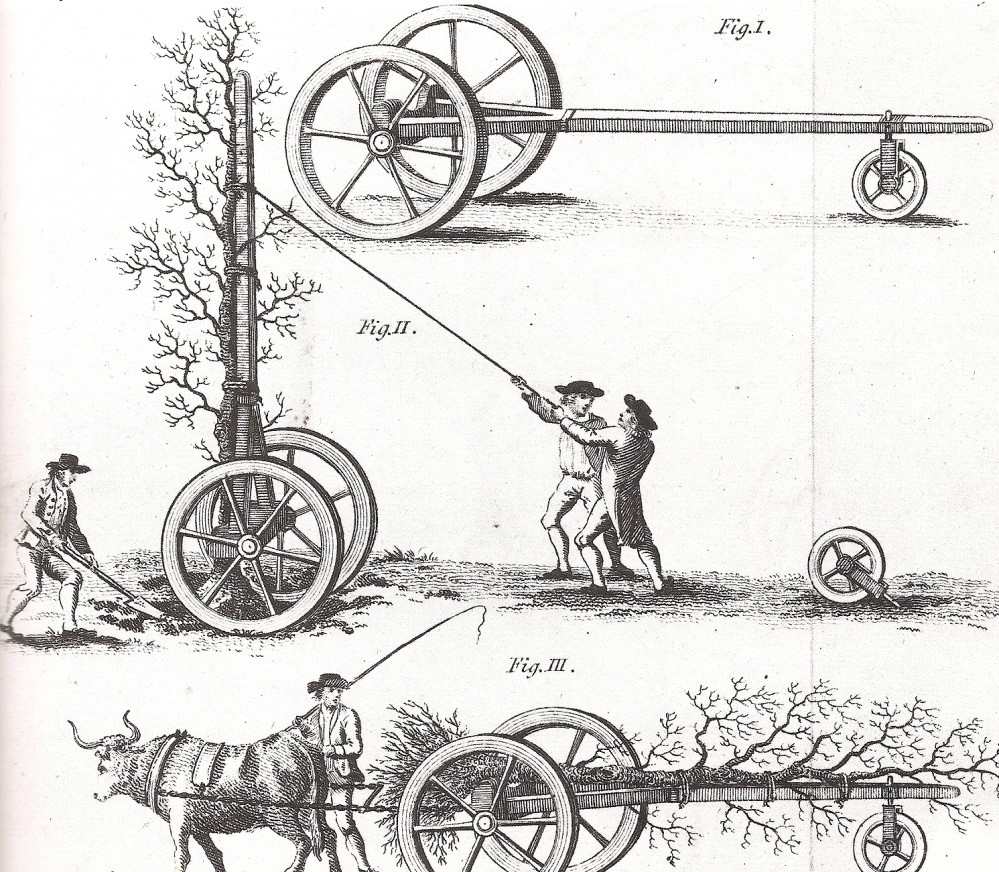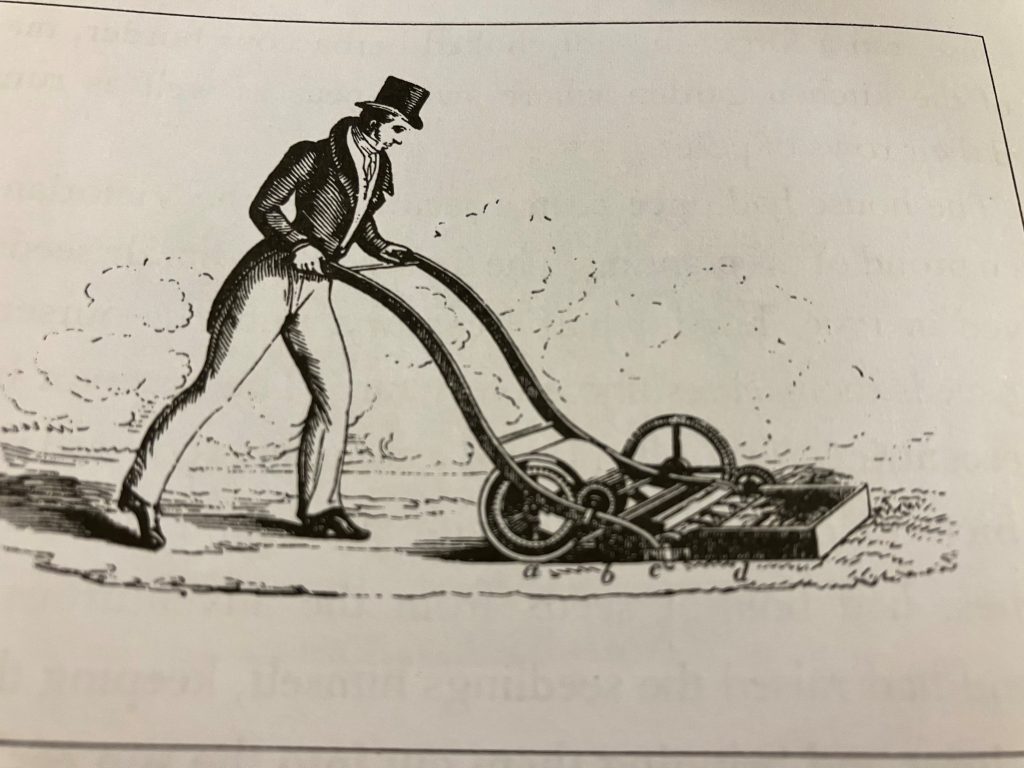An A to Z of the Chiswick House Archives: G is for Gardeners
In the latest edition of our A-Z archive series, volunteer archivist Cluny Wells shares the stories of our Head Gardeners (past and present)
When the 3rd Earl arrived back from his second Grand Tour in Europe, he had landscape architect, William Kent, in tow. Kent had a background in theatre design, and he and Lord Burlington designed the Chiswick Gardens over a number of years in a somewhat piecemeal fashion, but of course they needed a Head Gardener to put their ambitious plans into action.

From around 1727, Rice or Rhys Lewis was employed by Lord Burlington as Head Gardener, at a salary of £30pa. It is thought that his name could have been spelt Rhys, as Welsh gardeners were coming to London at this time. Rhys would have been working on the plans for the Gardens devised by the Earl and Kent. Lord Burlington or Rhys hired some ‘Weeder Women’ who were observed working in the Sutton Court gardens, at 6 pence a day.
A little later, a Henry Scott travelled from Scotland, with his brother James, and took over from Rhys Lewis, while James Scott ran the Chiswick Nursery. Both brothers were skilled pineapple growers. The painter William Aikman is believed to have depicted one of the brothers dressed in a kilt, and holding a pineapple, as part of a painting of Lord Burlington.

In 1741 James Scott compiled a list of gardening staff at Chiswick and the different areas to be gardened by them:

After Burlington’s death in 1753, Henry Scott left the gardens at Chiswick and set himself up as a market gardener. Timothy Lewis – possibly a son of Rhys – became Head Gardener in the same year.
William Murfin, was the 5th Duke of Devonshire’s Gardener from 1790. Murfin spent a lot of time in 1792 creating a ‘Ladies Garden’ for Duchess Georgiana – this could have been the Rosary around the Doric Column, or a revamp of Lady Burlington’s flower garden. He was employed until 1811 when the 6th Duke of Devonshire inherited Chiswick. We know from the archives that Murfin was initially paid £40pa, rising to £60pa by the time he retired.
When Murfin died he was buried in St Nicholas’ Church Burial Ground, together with Anne Venables, on her death. She worked as the housekeeper at Chiswick House. From Murfin’s will we can see that he left an income to her for the rest of her life. One must conclude that he and Anne, both unmarried, had a relationship for some years, whilst at Chiswick.
Murfin’s nephew Robert Clues or Clews followed on from him in 1811 at a salary of £50pa rising to £100pa. He oversaw the transformation and planting of the Italian Garden, designed by Lewis Kennedy, and the planting in the Conservatory, designed by Samuel Ware. Clues became a Fellow of the Horticultural Society, which leased land adjoining the Grounds of Chiswick from the 6th Duke. In 1830 two varieties of apple were named after him.
Another Scot, William Lindsay, with a salary of £100pa, came along in 1824 after Clues left Chiswick. He oversaw the shift from exotic fruit to camellias in the Conservatory. He purchased a collection of camellias from Chandler and Booth from 1828 onwards.

Lyndsay won gold Banksian medals, in 1832, from the Horticultural Society for peaches and nectarines and two years later for bergamot pears.
In 1826 the 6th Duke of Devonshire met Joseph Paxton, in the Horticultural Society grounds. The Duke acted impulsively and offered Paxton the position of Head Gardener at his Estate of Chatsworth – with a starting salary £65pa and a cottage in the grounds. Paxton was only 23 years old when he took up the post.
Charles Edmonds, living with his wife and family in the Garden House in Chiswick, can be found in the 1851 census and was Head Gardener from 1838-1880. During his tenure he became a Council member of the Horticultural Society, and also edited an edition of Jane Loudon’s bestselling ‘Ladies Companion to the Flower Garden’. He was considered to be an unassuming and courteous man. Edmonds continued to work as Head Gardener for the tenants living in the House after the Duke’s death in 1858, until 1880 when he retired due to ill health.

Michael May worked at Chiswick from at least 1871. Under his leadership, the grass paths around the beds were widened in the Italian Garden to allow for the use of lawn mowers.
Henry Aspland, Head Gardener, and family lived in Paxton House from 1892 to 1934. He managed the Gardens during the time of the Tuke Asylum, and his wife helped look after the Tuke children.
After 1928 the County and Borough Councils of Chiswick and Brentford took over the care of the Estate. The first Chiswick Head Gardener to be employed by the Council was Donald MacIntyre who also held a concurrent post, of Superintendent of Parks for the Borough. He and his family took the tenancy of Paxton House, in 1947, and lived there until his death in 1991 – he retired in 1975.
For the next 32 years a team of gardeners from London Borough of Hounslow were running the Gardens until 2007 when Fiona Crumley was appointed Head Gardener by Chiswick House and Gardens Trust in conjunction with London Borough of Hounslow and English Heritage. Fiona oversaw the Restoration (2009/2010) which resulted from the Heritage Lottery Fund Bid.
Fiona was followed, after her retirement, by Geraldine King in 2014, who initially intended to stay for just a few months and ended up staying for eight years. Geraldine moved on to work at Rosemoor, seizing the chance to live in the West Country – her dream location!
Our current Head Gardener is Rosie Fyles, who joined us in 2022 from Ham House. Rosie has exciting plans for the Gardens. Her main focus is to:
- lead and manage a garden team of 4-6 staff and over 60 garden volunteers
- plan the ongoing care and conservation of the historic garden, in the contexts of visitors’ needs and predicted climate changes
- increase the gardens’ biodiversity – garden with nature in mind
- contribute to fund-raising and raising the profile of the garden
- speaking at events and leading garden tours
- managing a budget- ordering stock, tools and products
- creative planning of the Kitchen Garden
I think anyone would agree that’s quite a formidable list!
Finally we want to thank all our gardeners, past and present, staff and volunteers, for the wonderful work you do and have done over the years.
Sources:
Chiswick Archive
Chiswick House Gardens. David Jacques.
A Little History of British Gardening. Jenny Uglow.
The Garden, An English Love Affair. Jane Fearnley-Whittingstall.
A Thing in Disguise, The Visionary Life of Joseph Paxton.
The Head Gardeners, Forgotten Heroes of Horticulture. Toby Musgrave.
Val Bott’s nurserygardeners.com